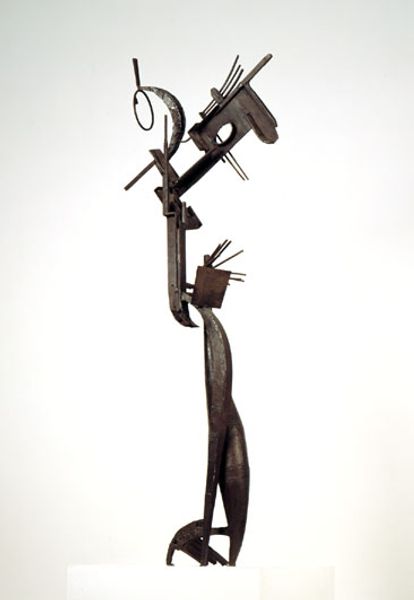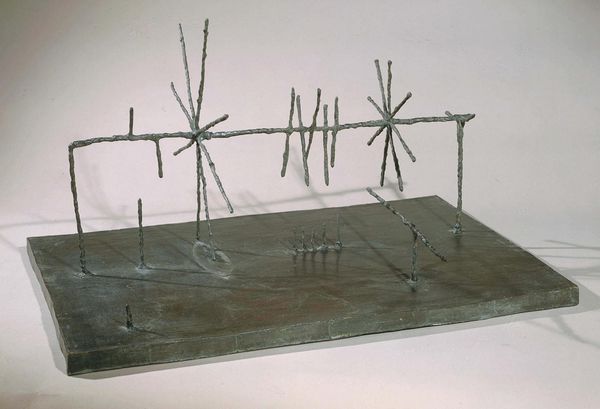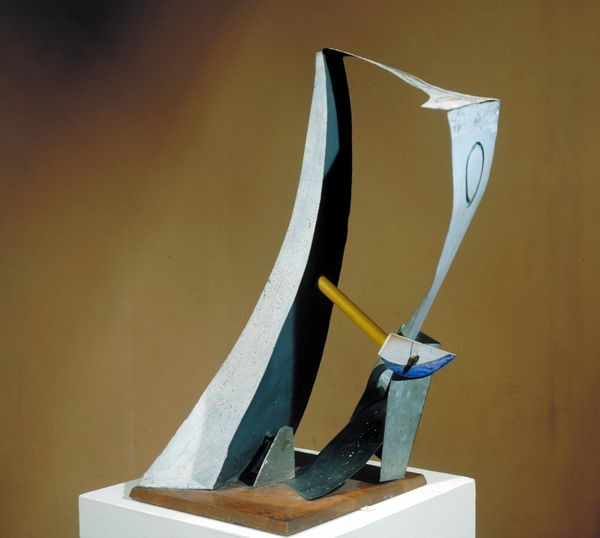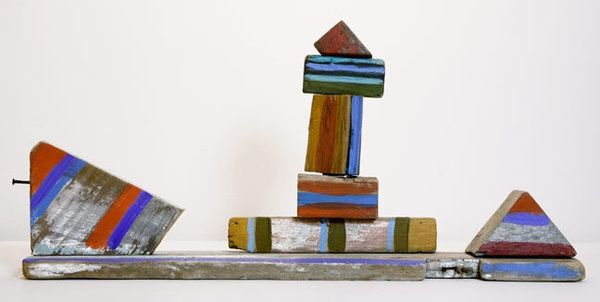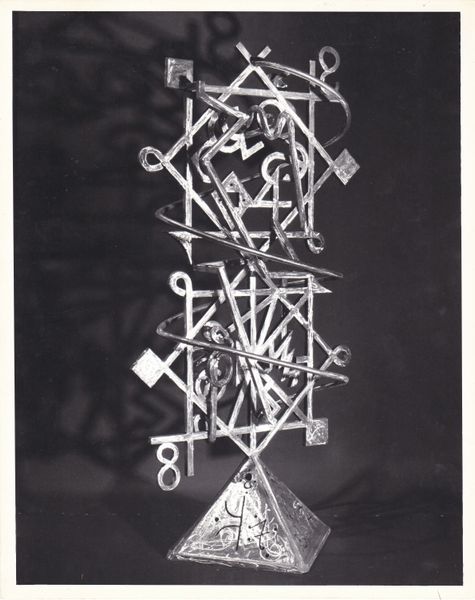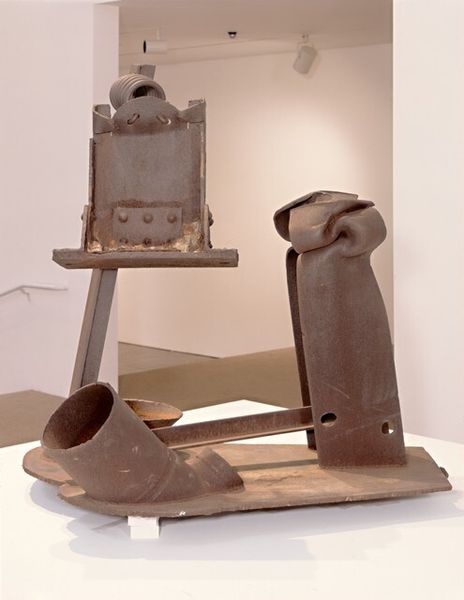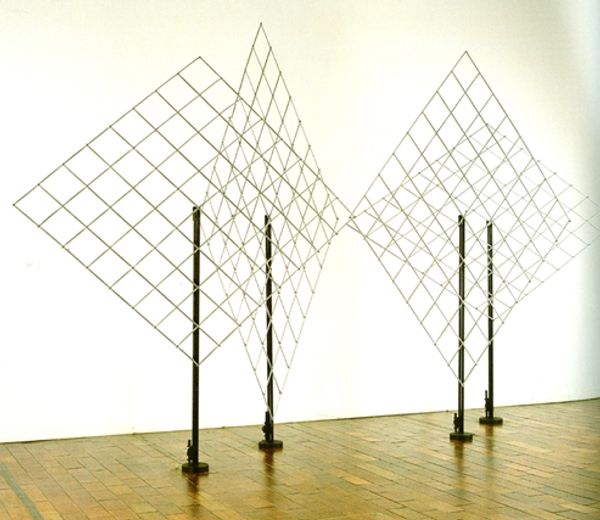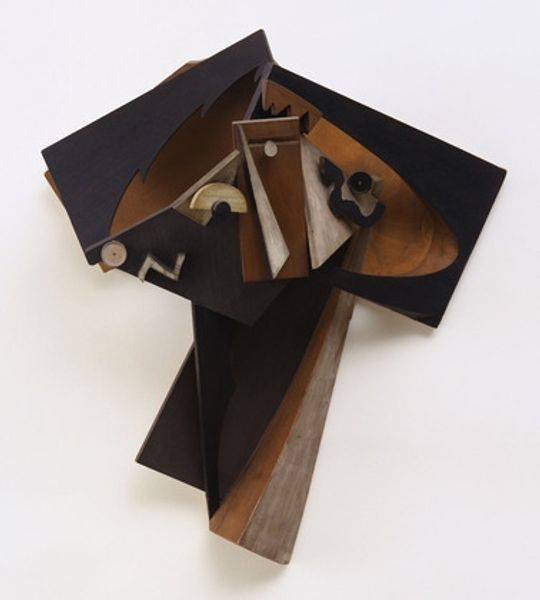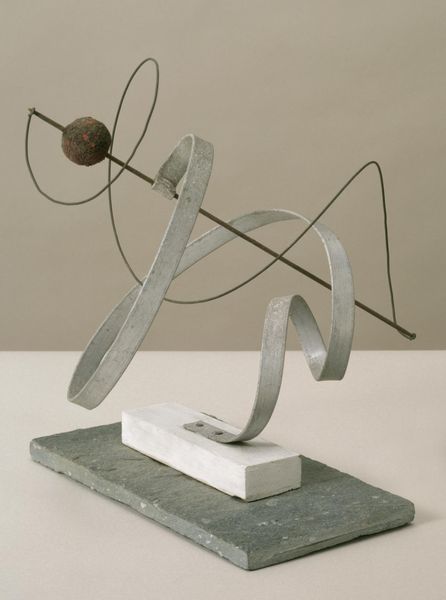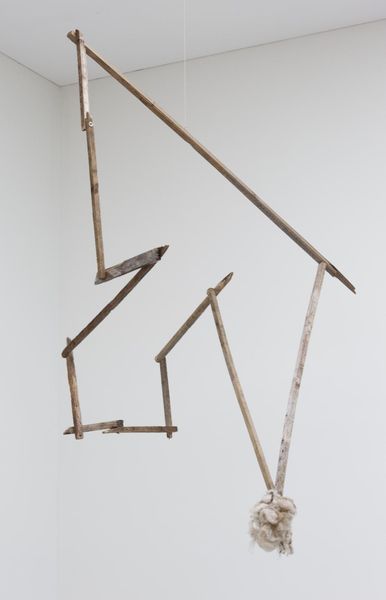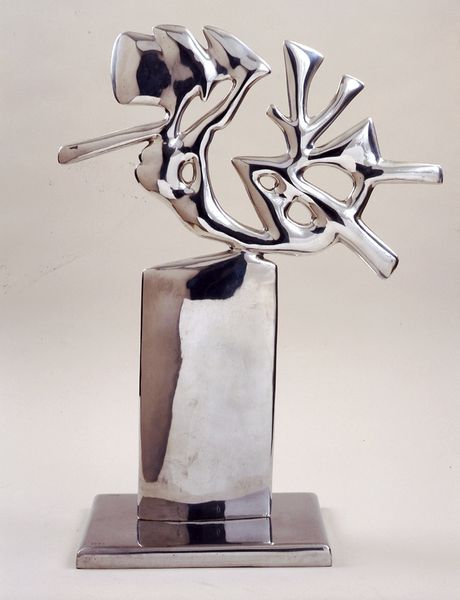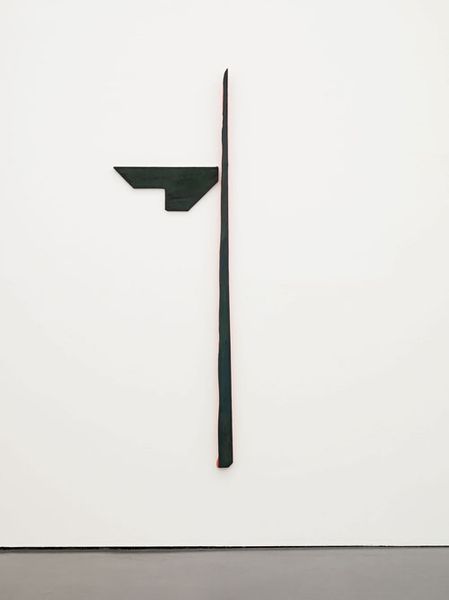
Dimensions: object: 2864 x 1480 x 1016 mm 225 kg
Copyright: © Estate of David Smith/DACS, London/VAGA, New York 2014 | CC-BY-NC-ND 4.0 DEED, Photo: Tate
Editor: Here we have David Smith's "Cubi XIX," a steel sculpture. It feels like such a playful arrangement of geometric forms, almost like a metallic totem. What strikes you most about its composition? Curator: Its verticality is immediately apparent, a defiant gesture against gravity. Notice how the artist juxtaposes the rigidity of the cubes with the single circular form, a subtle but significant disruption of the geometric language. Editor: So, the interplay between those shapes is key? Curator: Precisely. The surface texture, those burnished marks, further complicates the reading. Are they purely aesthetic, or do they hint at the process of creation? It is precisely the tension that makes it so compelling. Editor: That really changes how I see the sculpture. It's not just geometry, it's a conversation. Curator: Indeed. The material and form work together to create something truly unique.
Comments
Join the conversation
Join millions of artists and users on Artera today and experience the ultimate creative platform.
tate 8 months ago
⋮
The twenty-eight 'Cubi' sculptures were the last series made by Smith before his death in 1965. They are composed of simple geometric shapes and relate, as the name suggests, to Cubist painting and sculpture. In 'Cubi XIX', and a number of related pieces, the forms on the cross beam are arranged rather like a still life, though elevated by the vertical beam. Smith intended the 'Cubi' works to be shown outside, so that the burnishing of the stainless steel would reflect changes in lighting conditions. The geometric forms were softened by this response to the environment as Smith anticipated in a note on a sketch: 'polished - like I feel if I make square clouds'. Gallery label, September 2004
